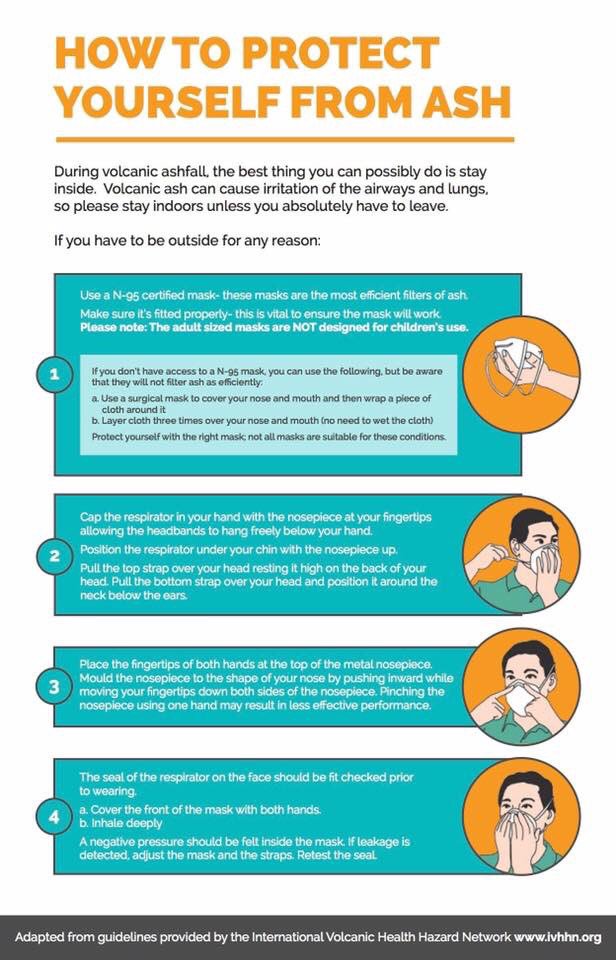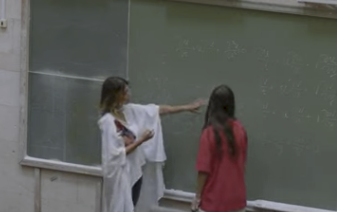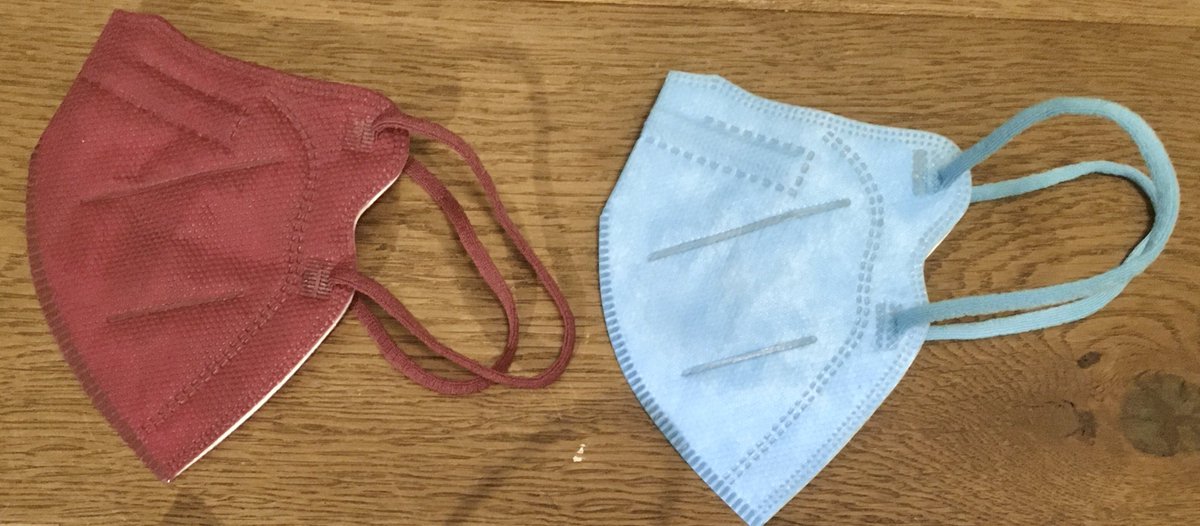The Health Interventions in Volcanic Eruptions project has finished. It has been amazing and challenging in equal amounts!! I will be adding highlights to this thread over the coming days. Enjoy! #IVHHN 

The consortium was made up of academic (@durham_uni, @GeofisicaUNAM, @univ_indonesia, Kagoshima Uni, @IOMworld) and stakeholder institutions (@PAHOemergencies, @pmi_diy @SaveChildren_ID) and funded by @Elrha/@wellcometrust/@DFID_UK. 

The aim of the project was to determine the effectiveness of different kinds of respiratory protection worn by communities affected by eruptions, and to understand what cultural contexts influence people’s motivations to wear them. We worked in Indonesia, Mexico & Japan. 
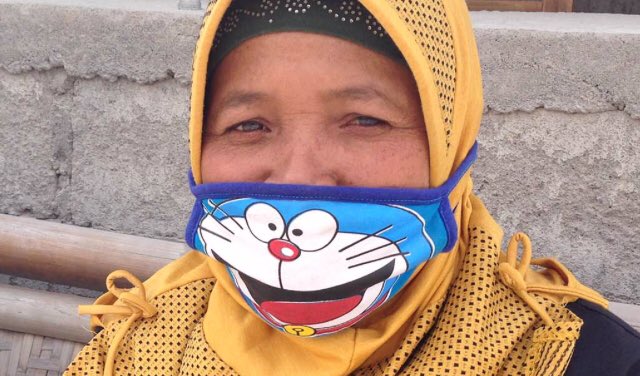
In the lab, @IOMworld tested the filtration efficiency of 17 different kinds of masks and cloth worn by communities living near volcanoes. We tested the fit of the best ones on volunteers. 

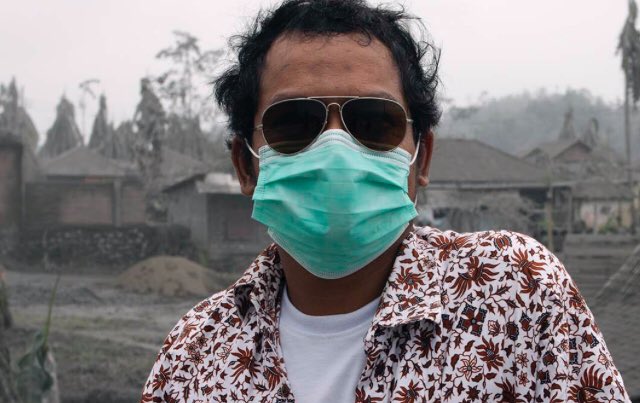
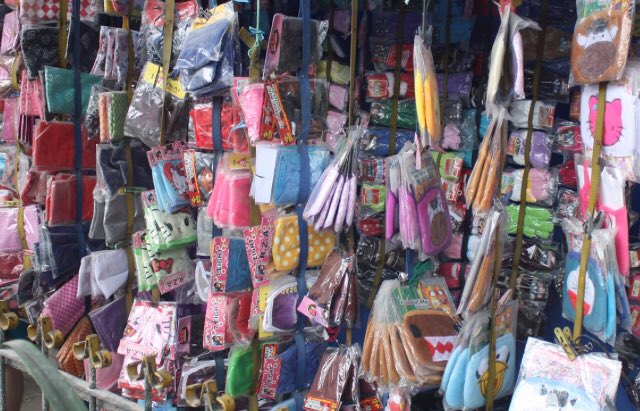
We wanted to know if different face shapes and features such as facial hair would impact fit, as well as the quality of the mask itself. 



Because, you see, before we did this research, there was absolutely no evidence as to the most effective kind of respiratory protection for reducing inhalation to volcanic ash. Would any of these be effective? Find out tomorrow... 

Want to find out more in the meantime? Check out the HIVE project website: community.dur.ac.uk/hive.consortiu… 
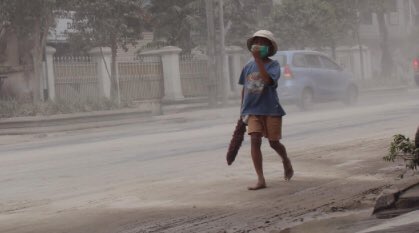
In today’s thread, I will explain the key results.
#1. This graph shows how well a range of different masks and cloths filter ash particles. It’s not an easy one to explain on Twitter so I added some photos. Basically 💯% is 👍👌. Multilayered masks did best. Bandanas did worst. sciencedirect.com/science/articl… 

#2. The best masks are certified (by industry standards) to filter very fine particles (eg PM2.5). Surgical masks performed quite well - about 80-90% filtration efficiency. A very basic mask distributed by @pmi_diy (Red Cross Indonesia) also performed really well. 

#3. Cloth materials performed poorly, overall. Particles passed right through the bandana. When we folded it (x2 & x3) it did improve filtration but not nearly as effective as a surgical 😷. Wetting cloth/masks didn’t help either. 

#4. Note that the data points spread as you move ‘down’ the graph. Turns out the effectiveness of the materials at filtering particles depends on the physical characteristics of the ash. Except, the best masks always worked well, no matter what dust was used. 

#5. So we took these best ‘PM2.5’ masks, plus surgical masks which also performed well, and asked volunteers to wear them in the lab, whilst sweeping a non-toxic dust called aloxite. We then tested the leakage into the masks i.e. how well they fitted. sciencedirect.com/science/articl… 

#6. We found that the industry certified (N95) mask had the least leakage and the best filtration, but because it fitted so well, our volunteers in the lab, and in Indonesia, found it quite uncomfortable to wear. mdpi.com/1660-4601/15/1… 

#7. Not surprisingly, the other masks, which are not designed to fit well, had more leakage and were comfier to wear. If we added a piece of cloth (bandage) over the surgical mask, we improved the fit and reduced leakage but this also reduced comfort. sciencedirect.com/science/articl… 
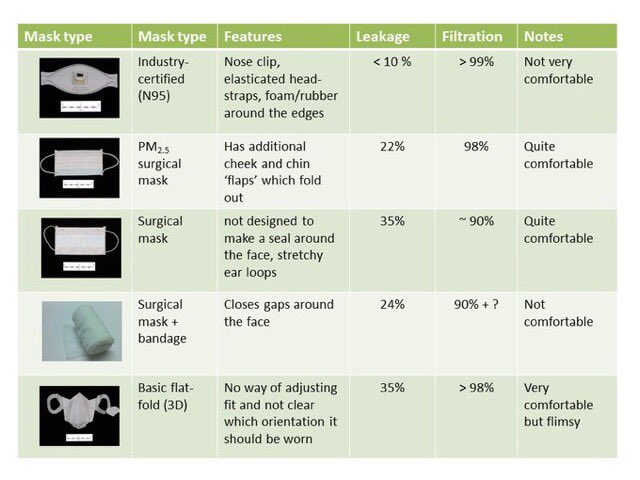
Meanwhile, we found out that people are concerned about ash inhalation and want to protect themselves, but their motivations to do so depend on the local demographics and capability and on their trust in various ‘authorities’ who are providing information. sciencedirect.com/science/articl… 

Want to know more? The above tweets have links to the (free to download) academic papers published on this work. Tomorrow, I will explain how we have translated the research findings into public informational products which are now available at ivhhn.org 
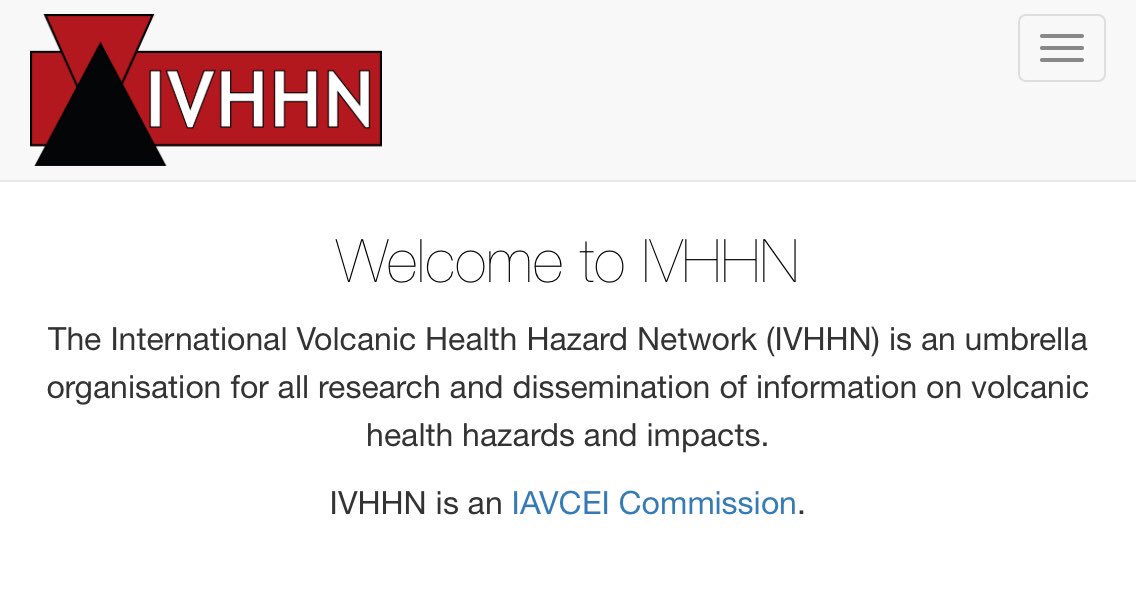
Maybe you are also wondering how such masks perform against regular pollution (e.g. diesel exhaust). Luckily @IOMworld did those experiments too, on masks from Beijing. Results are basically the same: industry certified masks work and fit the best. oem.bmj.com/content/75/6/4… 
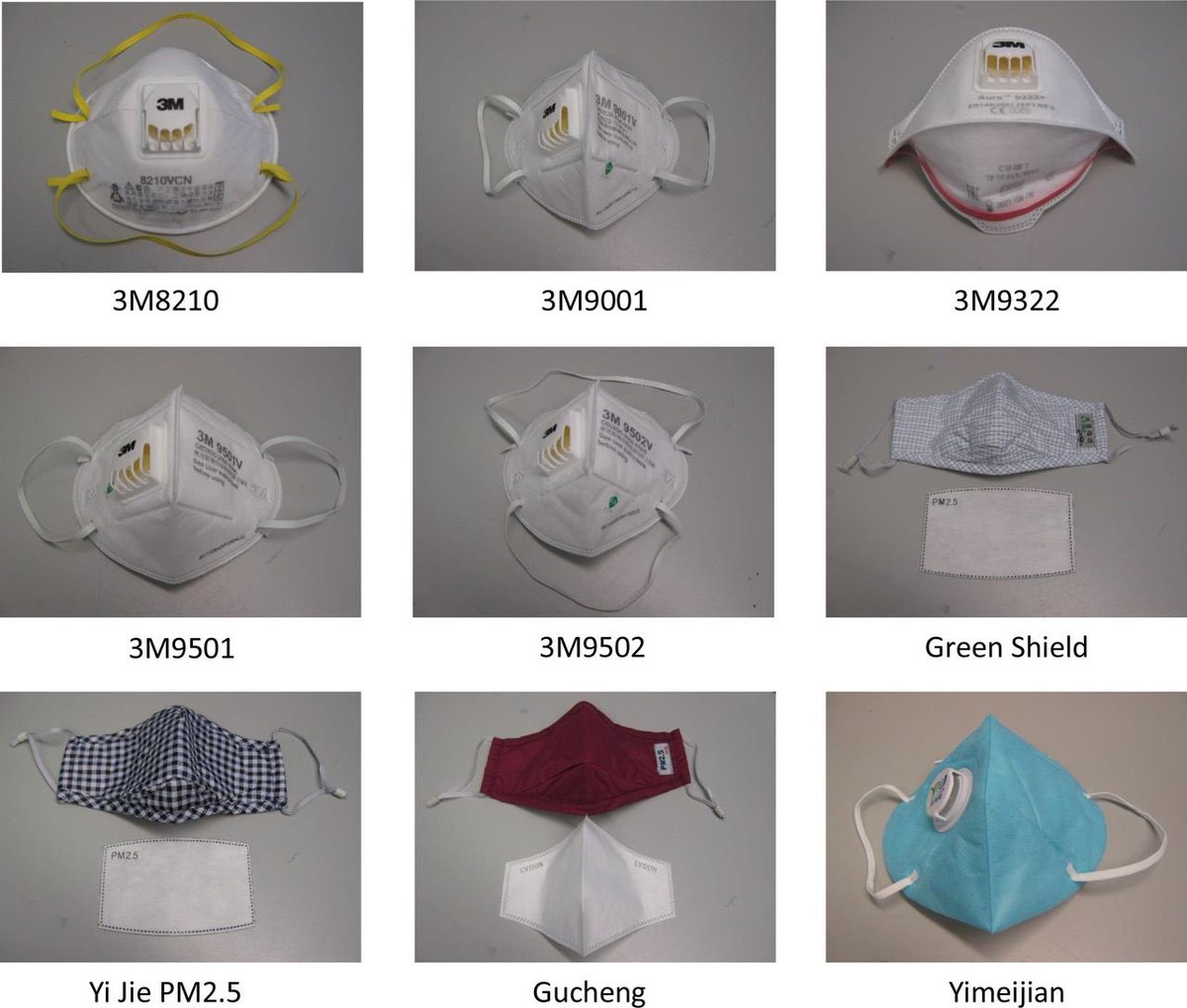
So, the results showed that the best kind of mask for people to wear to prevent inhalation of volcanic ash is one designed for industrial use, often called N95 or N99 mask (FFP2/3 in Europe). Even without training in how to fit them, these performed best on our volunteers. 

But, around the world, governmental agencies, in particular, tend to give out masks that are already stockpiled, which tend to be cheaper surgical masks. It is important that people are told of the likely effectiveness of these products and also how to achieve the best fit. 

So we designed a range of informational products to help with that. They were carefully designed with the help of community and agency representatives in Yogyakarta, Indonesia and are now endorsed by @pmi_diy and @Pusdalops_diy amongst other agencies. 

There is a leaflet on how to fit a facemask, to be handed out by agencies when they distribute masks. This could be used for any particulate air pollution crisis including forest fires. It is cure available in English, Bahasa and Spanish. ivhhn.org/information/pu… 

To accompany the leaflet, we made a public service announcement-style video, on how to fit a facemask, also currently available in English, Bahasa and Spanish.
The communities we worked with asked us many questions eg. how long they could wear a disposable facemask for and whether they were suitable for children. We have gathered all of this information, including other ways to protect from ash, in another video.
The ash protection video comes with an accompanying pamphlet. Both are available in English, Bahasa and Spanish. All of these products are held on the International Volcanic Health Hazard Network website: ivhhn.org/ash-pamphlets 

We also made a poster which gives the most important information on ash protection, which can be put up on bulletin boards, in health centres, schools and village spaces etc. Also currently in English, Bahasa and Spanish. ivhhn.org/information/pu… 

Finally, we wanted to help people learn how to cope, by understanding the experiences of other people who have had to live through an eruption. So we made a film about how people protected themselves from ash during the 2010 Merapi eruption. I ❤️ this 🎥!
I want to thank all of the people who helped make these products come to life. Especially @arianisoejoeti @laksmilaksmi5 @wand_hermawan_ @YEUJogja @danangsamsu @ransel_hitam @BPIPT @InatureFilms @LenaDominelli @Djferdiwijaya @pmi_diy @Pusdalops_diy Terima kasih!! 

Tomorrow, I will let you know a bit about the impact that the work is already having around the world and the training we are providing on how to fit facemasks. Tonight I’ll leave you with a photo of some of the wonderful women we worked with to design these products. 

Today’s tweets are going to be about the impact that the HIVE research has already had over the past year.
Firstly, all of the HIVE audiovisual and printable products are downloadable from the website of the International Volcanic Health Hazard Network (ivhhn.org) which is the go to place for public information about the health impacts of eruptions. 

But, in September 2017, Mt #Agung, in Bali began erupting before we had had time to make our informational products! So, we put the key results of our lab work on IVHHN.org. These were picked up by a group of NGOs called Mt Agung Relief. 

MAR decided to only source and distribute N95 masks as part of their humanitarian effort. They received 55000 masks via donations/crowdfunding. An issue arose though because they were sent many different kinds. Are they all equally effective? More research needs to be done! 

The HIVE/IVHHN printed products were finished by the time the Fuego (Guatemala) eruption happened in 2018. They were distributed by @OPSGuate @PAHOemergencies and thousands of N95 masks were donated by @3M. 

Meanwhile, this wonderful boy added N95 masks to his emergency kits which he sells in Costa Rica to help protect people from natural hazards. @CajitasBomberos ❤️ 

In mid-2018 #Kilauea, Hawaii started generating ash in daily explosions. We advised on mask use, and @3M donated ~18000 N95 masks. multimedia.3m.com/mws/media/5596… 

Then, in Nov. 2018 wildfires in California caused terrible air quality and there was a great need for public respiratory protection, especially for people without homes. We advised @MaskOakland, who were sourcing and distributing masks to vulnerable people. 

Well, after all that I’m exhausted, so that’s enough for tonight. Tomorrow I will wrap up with our Train-the-Trainer initiative and new protocols for conducting medical studies in eruptions.
In 2014, 5cm of ash fell on Yogyakarta city from Kelud volcano. We were able to do a quick survey to document the types of masks people were wearing, how they wore them and where they got them from. Many people were wearing them incorrectly. doi.org/10.1016/j.jvol… 

So, once we had developed our information products on how to correctly fit a facemask, we ran three Train-the-Trainer workshops, led by the International Society for Respiratory Protection and organised by the Red Cross in Yogyakarta (@pmi_diy). 






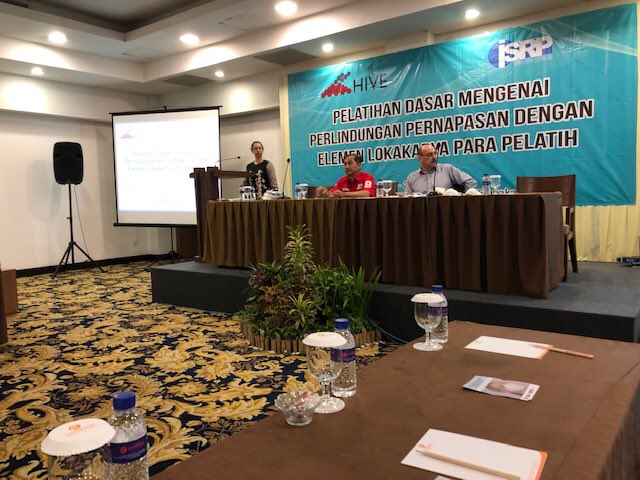
The aim of a Train-the-Trainer workshop is that people are trained to then train many other people. Since our workshop, hundreds more people have been trained! 👏🏼😊 
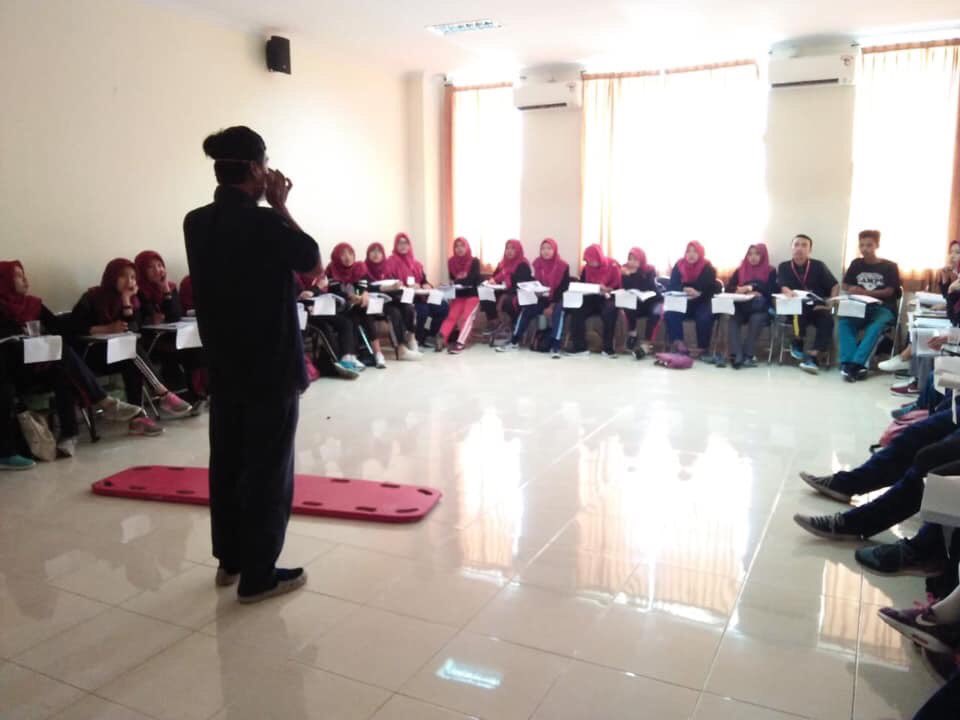
The HIVE team (@IOMworld) also developed the 1st standardised protocols for health studies during eruptions. In Dec 18 we presented them to reps from 9 Latin American countries’ Ministries of Health, some of which are now incorporating them into their emergency plans. 👏🏼👍 

We (@IOMworld) have also completed a review on how to conduct a Health Impact Assessment to predict the respiratory impacts of volcanic eruptions. Are urban #AirPollution concentration response functions appropriate?We are hoping to submit this manuscript very soon! #epidemiology 

We recently went back to Indonesia to present the information products to the communities that we worked with and to conduct a learning evaluation. Had people learned how to protect themselves from ash? Looking forward to telling you soon! 





So that’s it! The work has already led to a new PhD studentship (@laksmilaksmi5 @GCRF @durham_uni @ppk_lipi @UNICEFIndonesia), and broadening interdisciplinary collaborations with lawyers and atmospheric pollution scientists. I can’t wait to see the full legacy from HIVE! 

All of the HIVE outputs, including informational products, academic papers and Train-the-Trainer information are available at community.dur.ac.uk/hive.consortiu…. The informational products are also available at IVHHN.org. Please share to get this information out there! Thanks! 

• • •
Missing some Tweet in this thread? You can try to
force a refresh



